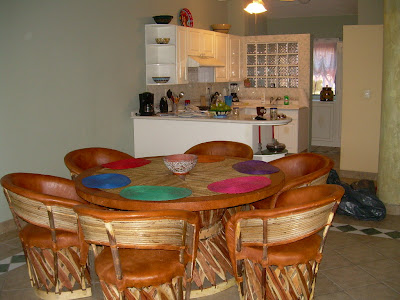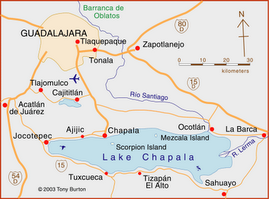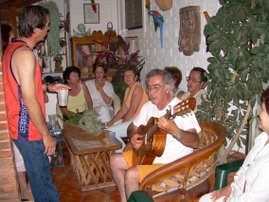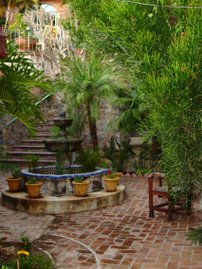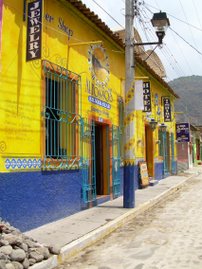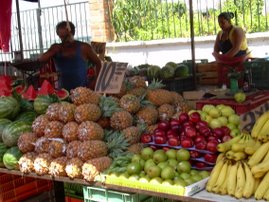Ajijic is full of restaurants, many of them good. Because of the large gringo population here, retired people who have the time to eat out frequently, there is fierce competition here for diners among restaurants. It is fairly easy to get an excellent dinner for between 60 and 90 pesos, which means that, even with drinks and a tip, you can pay $25-30 for such a meal. Of course, for those on a tighter budget, you can easily eat for significantly less, especially if you like quesadillas, burritos, or tacos. At lakeside, the variety of types of restaurants is like that in a large city like Guadalajara: Argentine, Mexican, Italian, Thai/Japanese, Vegetarian, Eastern European, Greek, Chinese, American BBQ, etc. The PROBLEM with all this reasonably-priced good food is that it's difficult to eat healthy. In restaurants, most dishes are meat or fish-based, with small servings of vegetables, high calorie, for sure. Maybe this is why I gained eleven pounds during the first eight months I was here. Now, we are much more careful what we eat, and we take advantage of the markets to get more fruits and veggies, eating in more, and I've begun to shed the extra weight.
Another option for eating out is small Mexican "loncherias" which are usually family-run small restaurants with a few white plastic "Corona" tables set up on the street, under a tarp, or in the front room of their home. The service is slow, no one speaks English, and you never know entirely what you're getting ( I saw "cabeza tacos" the other day...use your imagination!), but the food is delicious, usually with hot tortillas made right there and the salsa fresh out of the pot. At least around here, they warn gringos if something is "picante," or spicy hot. Mexicans love these little restaurants; and I seem to like them more than Pixie does. You can easily eat for $3 apiece, or less, including a cerveza. That helps stretch our monthly pension check! But again, these tend to be starchy and fatty meals. Just don't overdo it!
Then, there's take out. We have found a number of places which sell tamales, meat, or sweet corn wrapped in tortilla dough and then wrapped in corn husks and steamed for many hours. These are highly prized and delicious, cheap and not so fatty. There is also Chinese take-out and pizza available. Roasted chickens are available everywhere, as I mentioned earlier, with roasted papas (potatoes), for a reasonable price. Mexican like their pizza a different way. They like to take a perfectly good piece of pizza, with sausage or pepperoni, and smother it with catsup and mayonnaise. Go figure. Different cultures; different tastes.
There is also street food, which we are supposed to avoid because there seems to be little sanitary facilities for washing, etc. People sell roasted corn on the BBQ, and other Mexican traditional foods. People sell cut up fruit and in plastic cups.
I'm off to the writers' group this morning. Here's a new poem I'm reading:
What Makes Them Sing?
I walk by the short, dark men
I see them screening sand
Laughing and singing quietly
As they carry heavy white buckets of cement
Up old and splattered ladders
Again and again in heat.
What makes them sing?
Sitting on a stoop on a warm night
To escape the heat and cramped
Communal home they share,
Eating roasted corn
As children with filthy feet
Laugh with their somber eyes.
What makes them sing?
And love loud mariachi music
And fireworks and jokes
And fiestas that last all night
And driving too fast
And risking fate.
What makes them sing?
As we take over their space
And clog their streets
And expect, arrogantly
That they will accommodate our needs
And meet our unfamiliar standards,
While we not bothering to learn
To speak their lyrical language.
What makes them sing?
What makes them smile easily?
What do they know
That helps them live in
Their mean moments
With such grace that it draws
Me to live
Among their songs?






